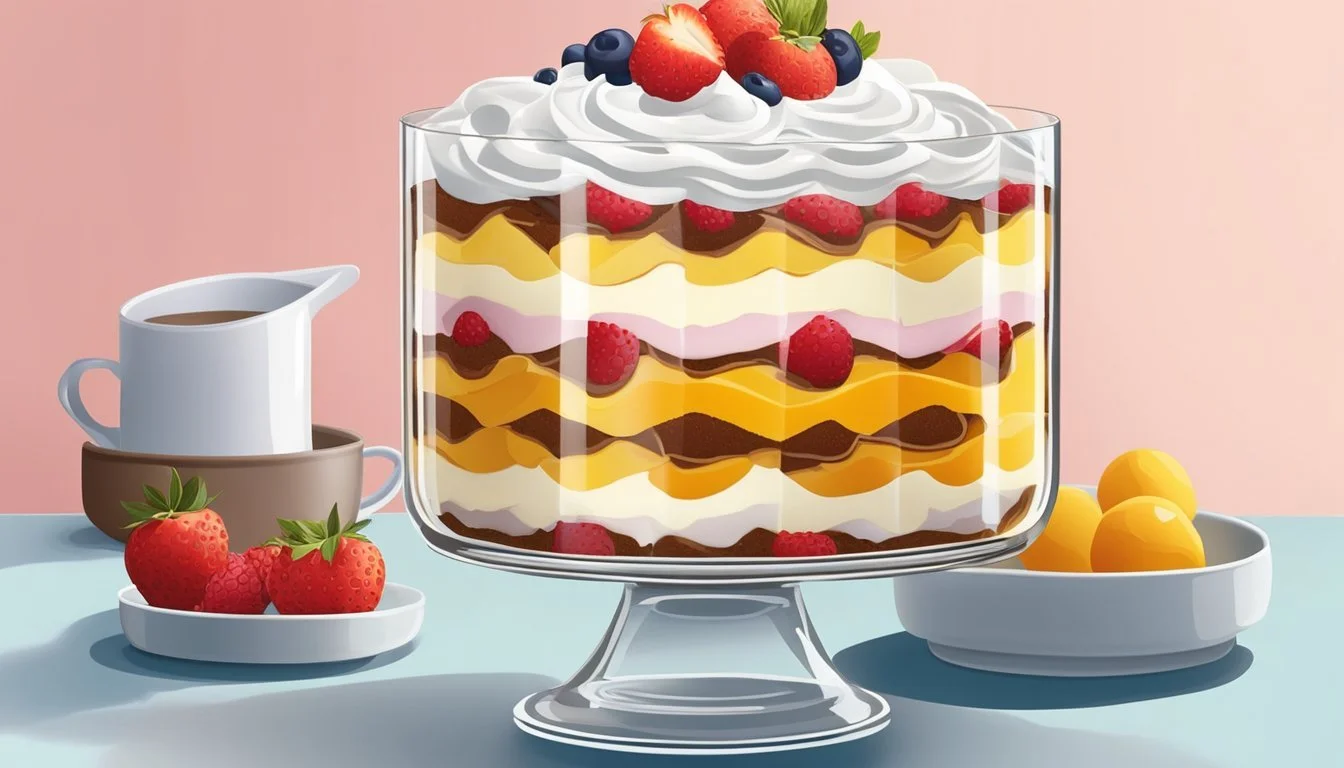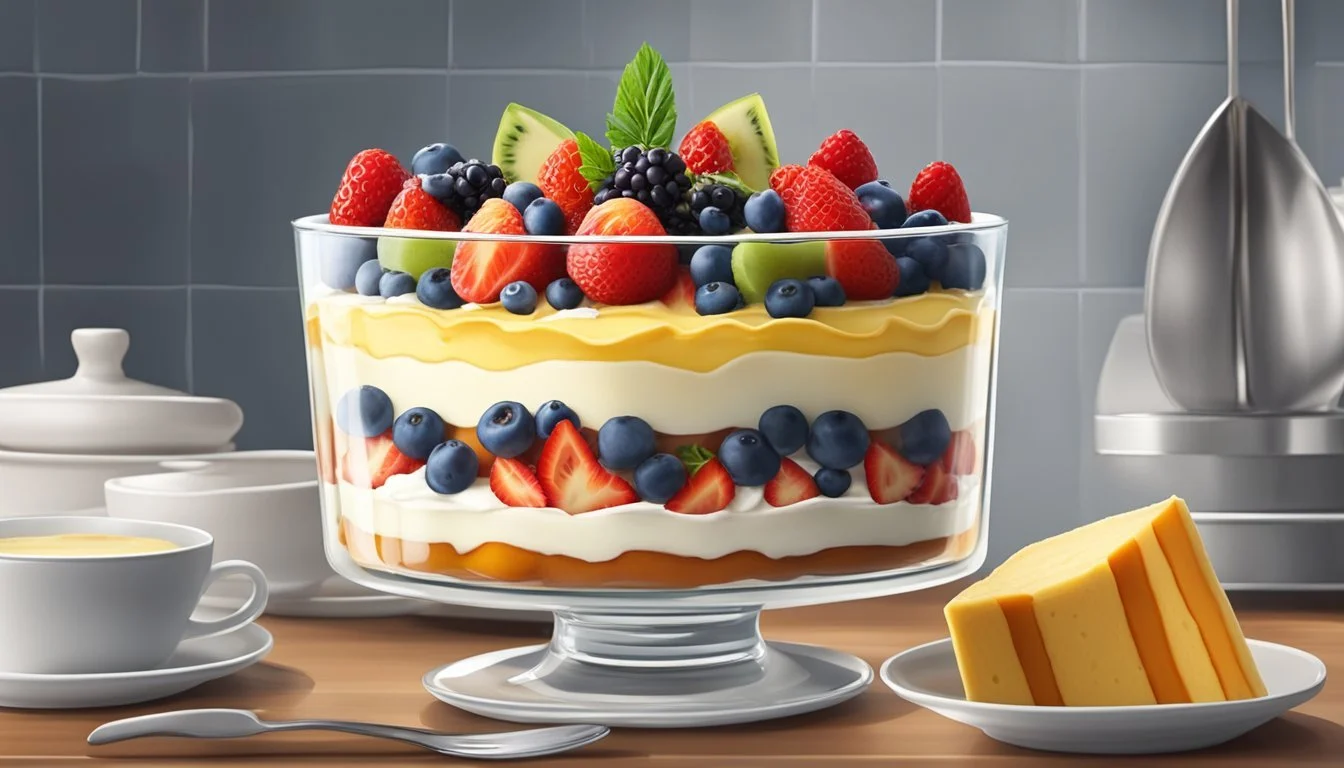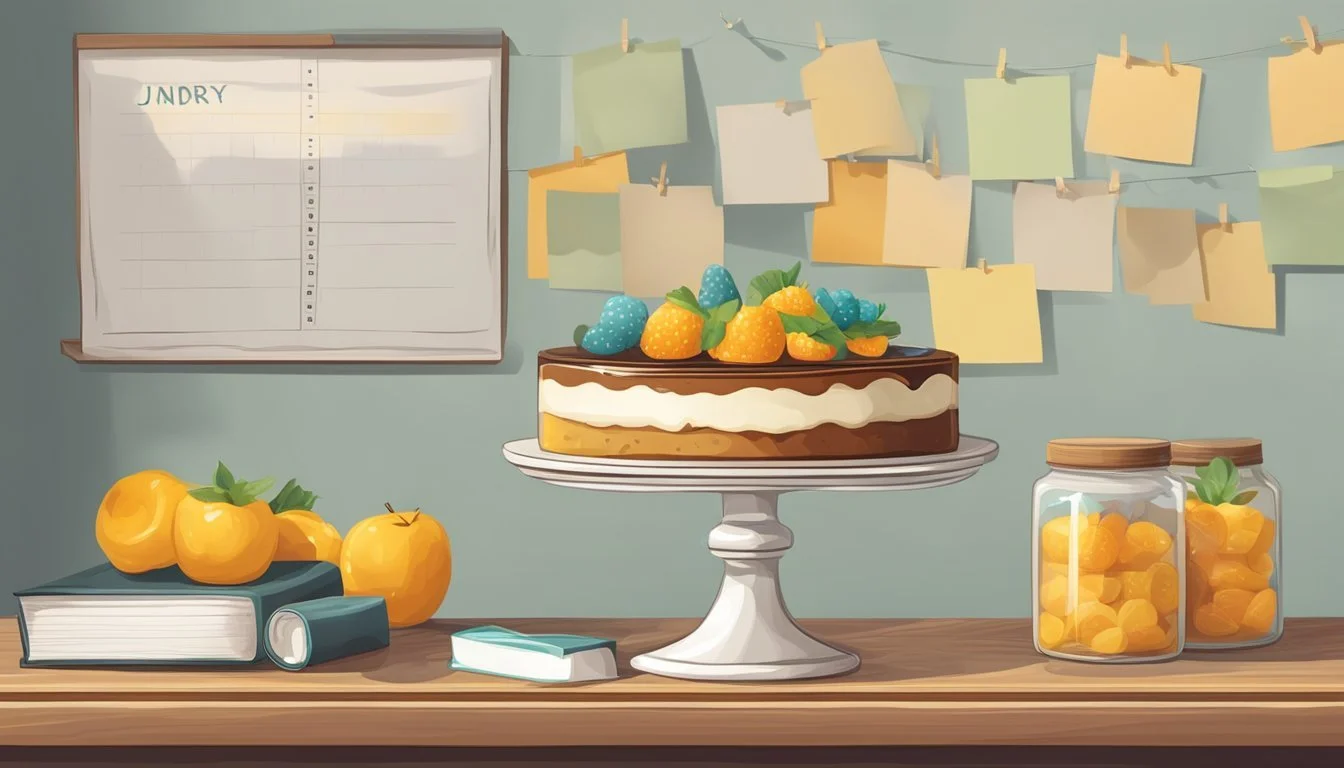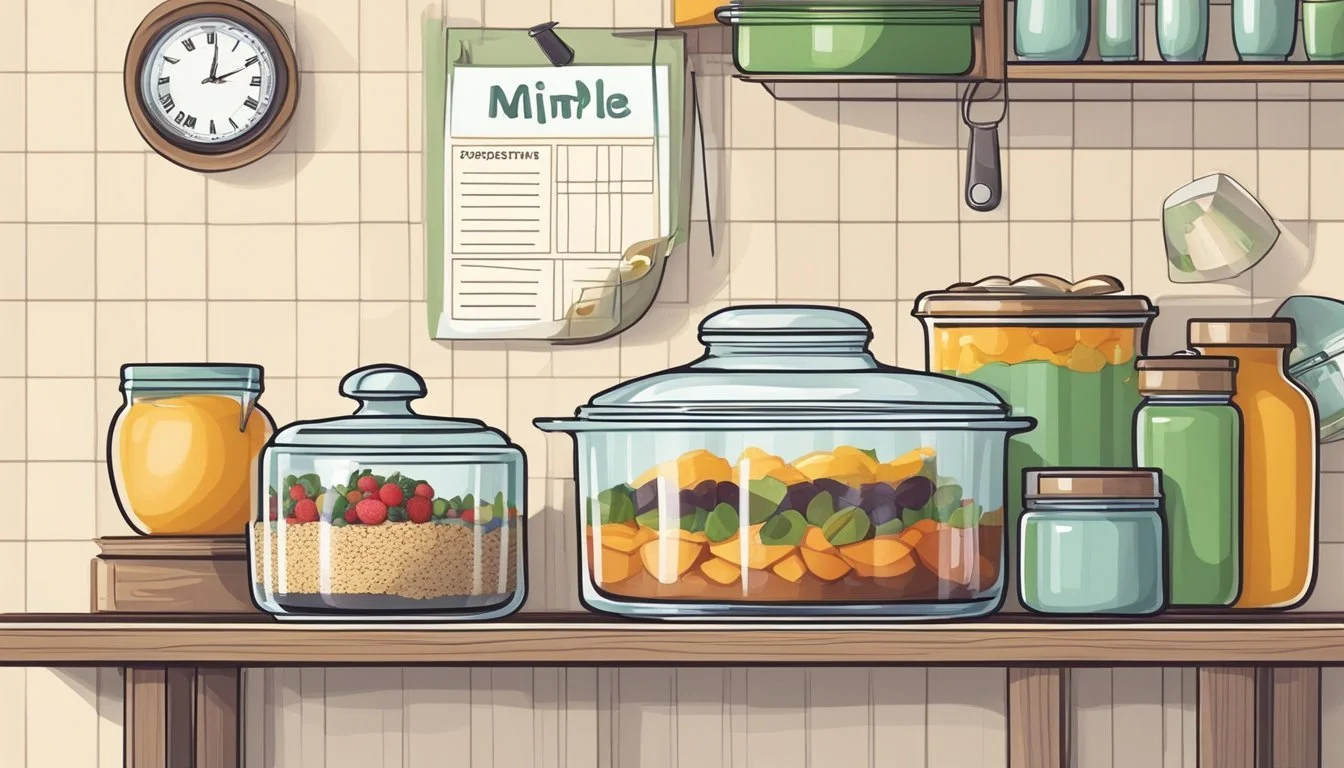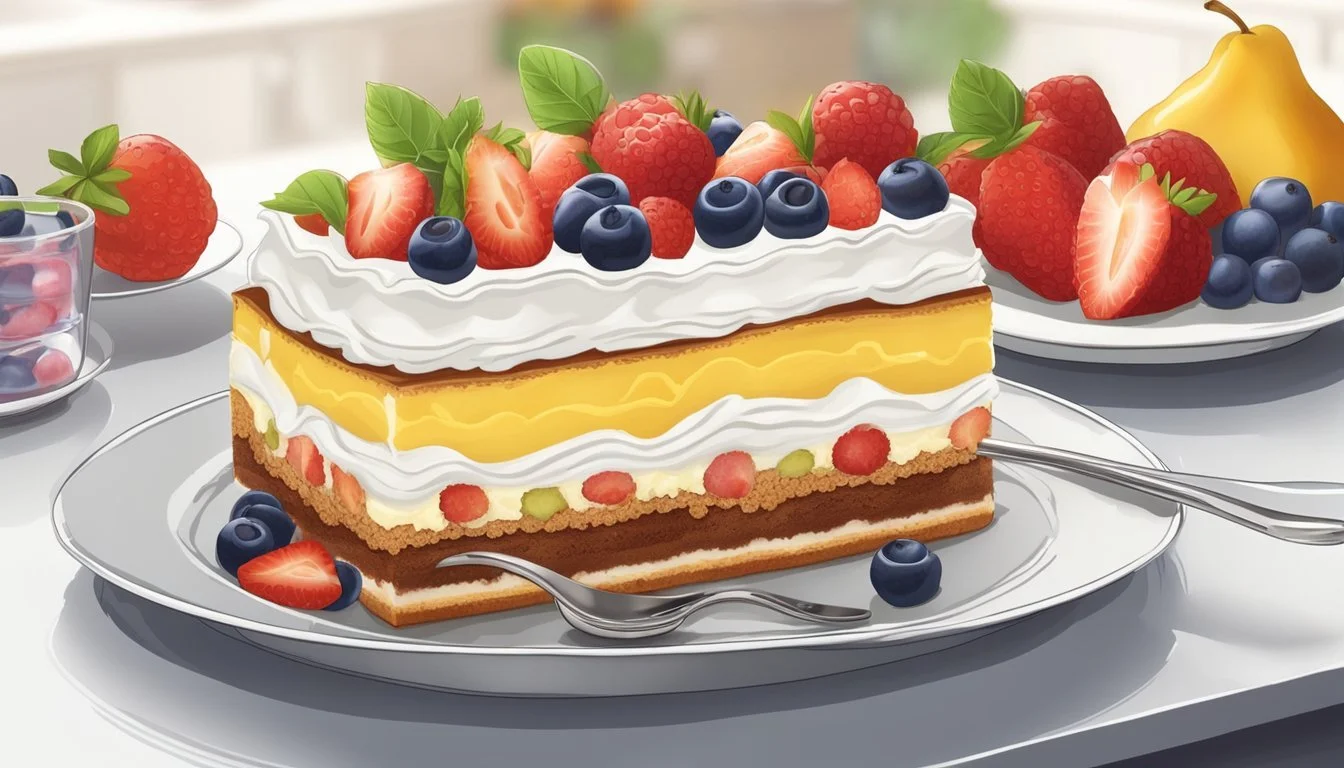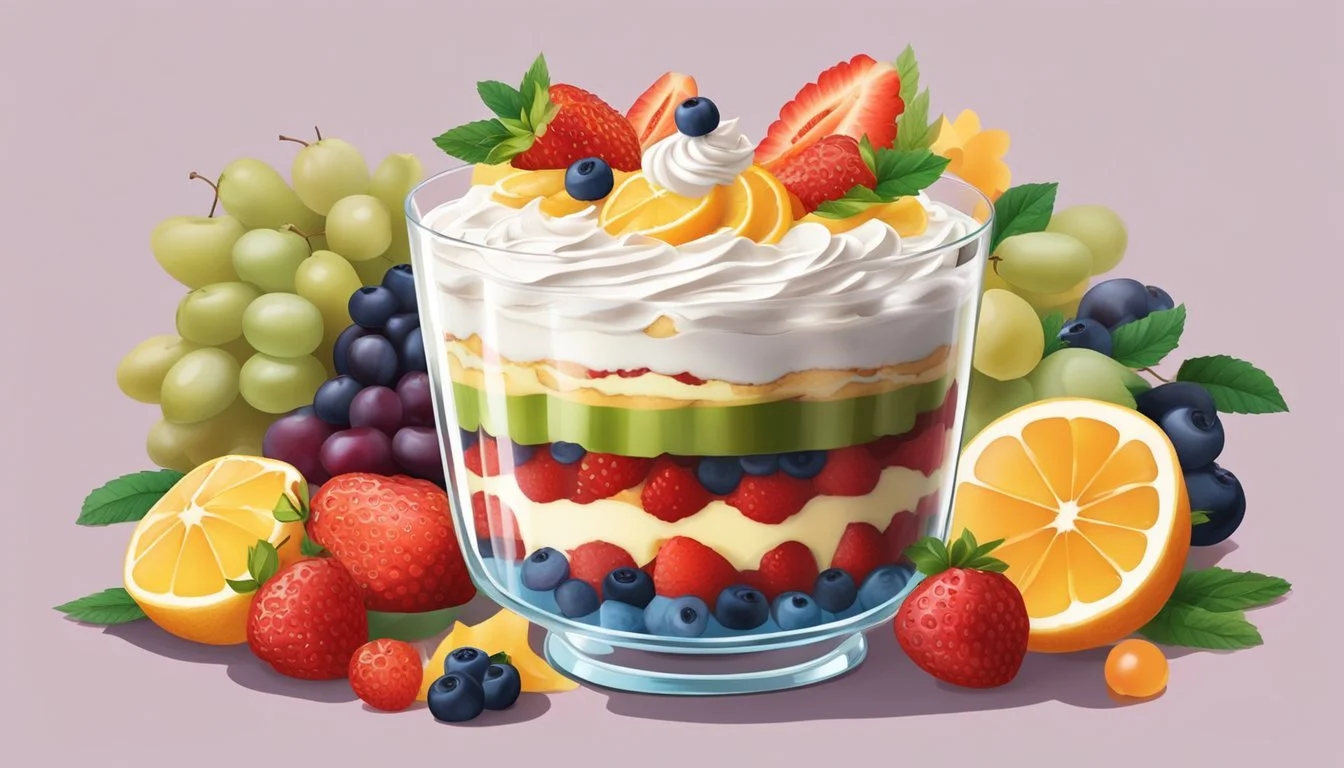How Long Do Freshly Prepared Trifles Last?
Shelf Life Explained
A trifle is a dessert that is both a feast for the eyes and a delight for the palate, known for its layers of sponge cake, fruit, custard, and cream (how long does cream last?). As with many culinary creations, the question of longevity is crucial, particularly when it comes to storage and freshness. A freshly prepared trifle maintains its best quality in the fridge for about two to three days, after which the texture begins to change.
The refrigerator plays a key role in preserving the integrity of a trifle. Storage best practices include covering the dessert with plastic wrap to prevent it from absorbing other odors and to keep the layers moist. However, as days pass, the cake layers will appreciate the moisture from the cream and fruit, becoming increasingly soggy. After the third day, while still safe to eat, the dessert's textural components may not be as enjoyable.
The longevity of the trifle is also influenced by the freshness of the ingredients used. Freshly cut fruit and freshly whipped cream contribute to the overall shelf life of the dessert. It's advisable to consume the trifle when at its peak, to relish the delicate balance of flavors and textures that make this dessert a timeless classic.
Understanding Trifles
Trifles are a beloved dessert with distinct layers that each contribute to its overall appeal. In exploring trifles, one will appreciate both their historical context and the techniques that perfect their presentation.
Origins and Components
Trifles originated in England during the 18th century, drawing upon even earlier similar dishes. A classic trifle typically includes:
Fruit: Such as berries or peaches, providing a juicy and tart contrast.
Alcohol-soaked sponge cake: Adds depth of flavor and a tender texture.
Custard: Creamy and rich, it binds the layers together.
Whipped cream: Offers a light and airy top layer.
Jelly or jam: Introduces a sweet and often fruity glaze.
Trifle Bowl and Layering Technique
A trifle bowl is a clear, deep, round dish that showcases the dessert’s beautiful layers. The layering technique is integral to a trifle's presentation and typically goes as follows:
Sponge Cake: Placed at the bottom, usually soaked with sherry or another spirit.
Jelly or Jam: Spread above or beside the cake to seep into its pores.
Fruit: Scattered evenly, often between layers of jelly and cream.
Custard: Poured over to envelop the underlayers.
Whipped Cream: Dolloped liberally on top.
Each layer should be constructed with care to ensure every spoonful includes a taste of all components. The transparent trifle dish not only serves the practical purpose of containing the dessert but also acts as a window to the layered artistry within.
Essential Ingredients
When constructing a trifle, the quality and types of ingredients are crucial for both taste and longevity. Each component can affect texture and flavor stability, with fresh ingredients generally offering the best taste but shorter shelf life.
Custard and Cream Choices
Custard forms the creamy layer of a trifle and should be thick and rich. Traditional trifles use homemade custard made from eggs, sugar, and vanilla extract. Store-bought custard or pudding can also be employed for convenience. Whipped cream, whether homemade from heavy cream or pre-prepared, adds lightness and should be sweetened, but not excessively so, as it complements the other sweet layers.
Selecting the Right Cake
The cake acts as a sponge for the trifle's moist ingredients. Pound cake is a popular choice due to its dense texture and ability to absorb flavor without disintegrating. Alternatives include sponge cake or ladyfingers; both should be stale enough to avoid becoming too soggy. Cakes (how long do cakes last?) can be plain or flavored with chocolate or caramel to add dimension.
Fresh vs. Frozen Fruit
Fresh fruit provides the best texture and flavor for a trifle; berries, namely strawberries and raspberries, are commonly used fresh for their vibrant colors and burst of natural sweetness. They should be ripe but firm, and cut into bite-sized pieces. Frozen fruit can be used, particularly when specific fresh fruits are out of season, but one should drain them well to prevent excess moisture from making the layers soggy.
Trifle Construction
When constructing a trifle, precision in layering and a balance in flavor combinations are essential. It's important to prepare each layer with attention to detail to ensure flavors meld properly and the final presentation is visually appealing.
Layering Techniques
A trifle consists of multiple layers, each contributing a unique texture and taste. The bottom layer typically involves sponge cake or angel food cake, which should be cut into pieces absorbent enough to soak up fruit juice or syrup without disintegrating. Jelly can be applied directly on top of the first cake layer to add a sweet, fruit-flavored glaze. For a structurally sound trifle, alternate between layers of cake, fruit, and cream to prevent any one layer from overwhelming the others. Garnishes placed on the topmost layer, such as fresh berries or chocolate shavings, offer a visually appealing finish.
Layer 1: Sponge cake/angel food cake (soaked in syrup or fruit juice)
Layer 2: Jelly or fruit preserves
Layer 3: Fresh fruit (bite-sized pieces)
Layer 4: Custard or flavored cream
Garnish: Fresh berries, chocolate, or nuts
Flavor Combinations
The secret to a delectable trifle lies in the flavor combinations. Select layers that complement each other, with neither overpowering the other. A classic combination might involve strawberries and a light mascarpone cream, allowing for a blend of tartness and a creamy profile. For a summer trifle, one may opt for an assortment of berries to pair with a delicate vanilla cream. When choosing flavors, aim for a mix of textures and tastes that come together harmoniously, encouraging the flavor to meld over time.
Classic: Strawberries, vanilla mascarpone cream, and sponge cake.
Berry Medley: Mixed berries, sweetened whipped cream, and angel food cake.
Chocolate Surprise: Chocolate sponge cake, chocolate shavings, and cherry garnish.
Preservation and Storage
Proper preservation and storage of trifles are essential to maintaining their freshness. Whether store-bought or homemade, trifles should be handled carefully to avoid rapid deterioration of this layered dessert.
Refrigeration Best Practices
For optimal freshness, trifles should be stored in the refrigerator. They are best consumed within three days to ensure the integrity of the dessert's structure and taste. When refrigerating:
Cover the trifle: Always use plastic wrap to create an airtight seal over the glass bowl or individual glasses containing the trifle. This protects the layers from absorbing odors and prevents the fruit within from drying out.
Temperature: Ensure the refrigerator is set at or below 40 degrees Fahrenheit to prevent bacterial growth.
Consistency: Frequent temperature changes can affect the dessert's texture, hence the trifle should be kept consistently chilled until served.
Freezing and Defrosting
While freezing is not the recommended method for trifles, as it can alter the texture of the cream and cake layers:
How to freeze (if necessary): If one must freeze a trifle, first cover it tightly with plastic wrap. Then place it in an airtight container to guard against freezer burn.
Defrosting: To defrost, transfer the trifle from the freezer to the refrigerator for several hours before serving. Never attempt to defrost at room temperature as it can cause uneven thawing and compromise the dessert's quality.
Shelf Life Factors
The shelf life of a trifle is influenced primarily by the freshness of its ingredients and the effectiveness of its storage method. Understanding these factors can help ensure that this delightful dessert remains at its best for enjoyment.
Ingredient Freshness
Freshness of the ingredients used in a trifle directly affects how long the dessert remains suitable for consumption. A trifle prepared with fresh, quality components is more likely to retain its desirable texture and flavor. Trifles can include a variety of components such as fruit, sponge cake, custard, and cream.
Homemade: Typically lasts around three days when using fresh ingredients.
Store-Bought: Might contain preservatives that extend shelf life beyond homemade versions.
It's important to note that the individual shelf life of the ingredients can be the limiting factor for the overall dessert. For example, dairy components like cream or custard may spoil first, limiting the trifle’s freshness.
Container and Covering
The container and covering used to store the trifle significantly influence its shelf life. An airtight seal is necessary to prevent unwanted moisture and contaminants, which promote the growth of mold or bacteria.
Glass Bowl: Ideal for storing trifles; it's inert and doesn't transfer unwanted flavors.
Plastic Wrap: Effective in sealing the dessert to maintain freshness. Ensure to cover the trifle with a layer of plastic wrap, making contact with the surface to prevent a skin from forming on the custard or cream.
Leftovers should be promptly covered and returned to the refrigerator to maximize their shelf life. The controlled temperature slows bacterial growth, with the recommended storage temperature being just above freezing, around 40°F (4°C).
Serving Suggestions
When one prepares a trifle, the freshness and presentation are equally crucial. The goal is to maintain the dessert's integrity from flavors to texture while also making it aesthetically appealing on the serving table.
Presentation Tips
A trifle should be served in a clear glass serving bowl to showcase its colorful layers. One can enhance the visual appeal by ensuring each layer is distinct and neatly assembled. For a touch of elegance, lightly drizzle liquor such as sherry or brandy over the sponge cake before layering to add sheen and depth.
Layering: Alternate between sponge cake, fruit, and cream to create contrast.
Accessories: Garnish with a sprinkle of nuts or shavings of leftover cake for added texture.
Accompaniments and Pairings
Trifles pair well with complementary beverages and small side dishes. Choose drinks and sides that will not overpower the delicate flavors of the trifle ingredients.
Coffee or Tea: Ideal for balancing the sweetness.
Sparkling Wine: A bubbly companion that contrasts with the creamy layers.
One can also serve additional bowls of fruit or nuts on the side, allowing guests to add to their dish as they please. This customization enhances the guest's experience and allows the trifle's individual components to shine.
Variations and Alternatives
In the realm of trifles, variations cater to diverse dietary needs and inspire reinvention of this classic dessert, ensuring its timelessness and widespread appeal.
Dietary Modifications
Trifle adaptations can be made to accommodate specific dietary restrictions. For example, a chocolate trifle can easily be transformed into a gluten-free version by replacing its traditional sponge cake with gluten-free options such as banana bread or a chocolate almond flour base. Those avoiding dairy can use mascarpone alternatives like coconut cream or Greek yogurt to impart richness sans lactose. To reduce sugar, one might opt for macerated berries, sweetened naturally by their own juices, or create a lemon curd using a sugar replacement.
When making an English trifle that calls for jelly, vegans can choose agar-agar over gelatin to maintain the texture without using animal products. Additionally, substituting the traditional custard with a vegan custard made from plant-based milk ensures that the dessert adheres to vegan standards while still providing a classic taste.
Other Dessert Inspirations
The trifle's layered structure has inspired an array of make-ahead desserts (What wine goes well with desserts?), each with its unique twist. An example is the jelly trifle, introducing vibrant, fruit-flavored jelly layers that appeal to both vision and taste. For a more British dessert feel, incorporating sherry or brandy adds that characteristic boozy note, creating depth in the sweet layers.
For a lighter version, some recipes suggest folding meringue into the whipped cream to add a fluffy, airy texture. Moreover, a recipe that includes bold flavors like mascarpone or macerated berries offers a complex taste profile, while still committing to the dessert's notorious layers of flavor and texture. These alternatives not only enhance the trifle but also allow for personalization based on preferences and inspirations drawn from other desserts.

